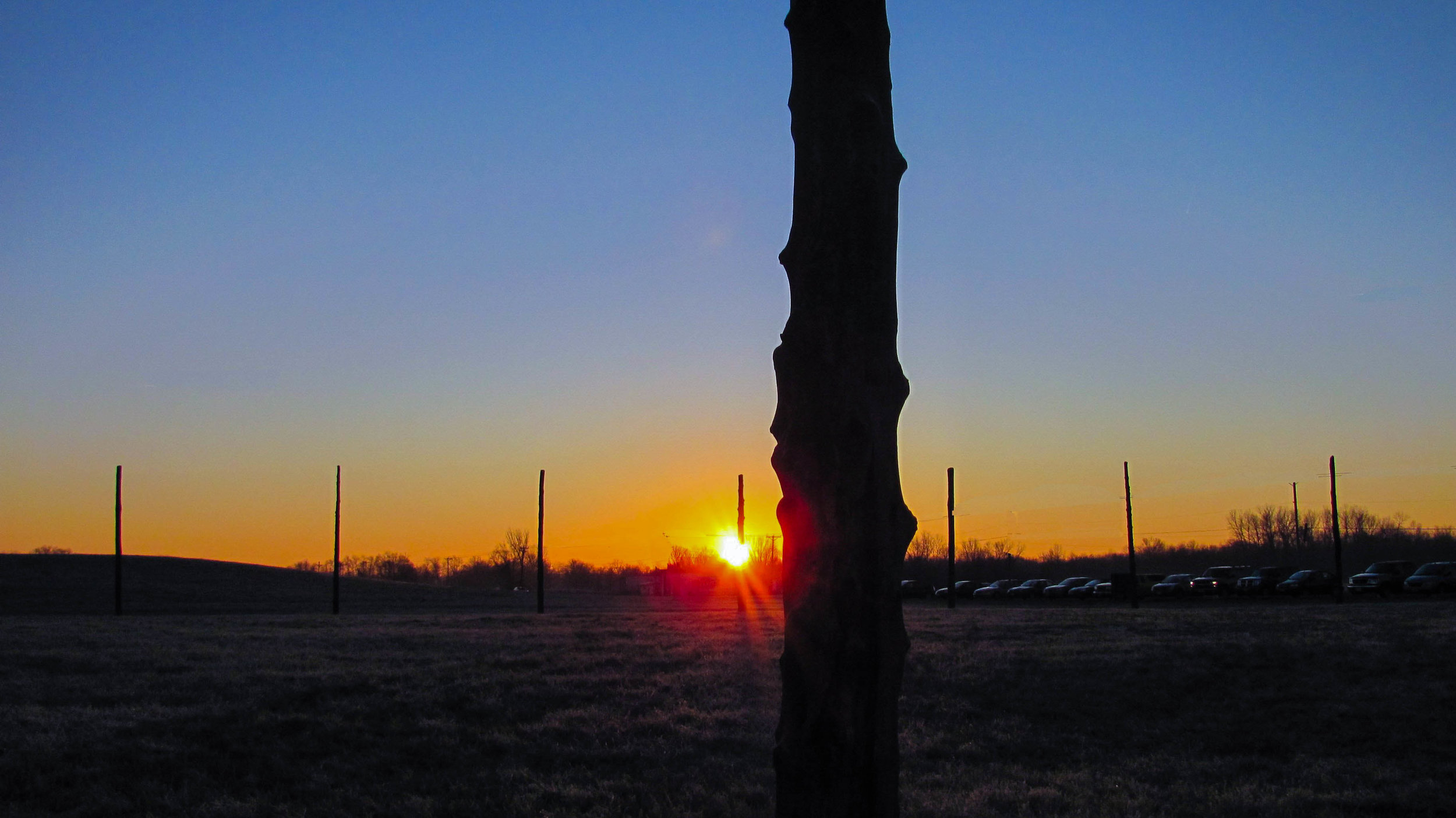Cahokia Mounds State Historic Site
off Collinsville Road
Collinsville, Illinois
618-346-5160
Woodhenge
Woodhenge at the Winter Solstice
Woodhenge is the site of a circle of posts once used to make astronomical sightings and stands west of Monk's Mound at Cahokia Mounds State Historic Site. Woodhenge is the site of five different circles that were constructed by the Native Americans that occupied the site from 900-1100 C.E. The third circle (1000 C.E.) was reconstructed in 1985 at the original location. The circle is 410 feet in diameter, had 48 posts spaced 26.8 feet apart (9 are missing on the west side, removed by a highway borrow pit).
Woodhenge was discovered in the early 1960s by Dr. Warren Wittry who was studying excavation maps when he observed that numerous large oval-shaped pits seemed to be arranged in arcs of circles. Wittry theorized that the placement of posts in the pits served as a calendar that marked solstices and equinoxes. After further excavations by Wittry and other archaeologists, more post pits were found and evidence that there were as many as five Woodhenges at this location. These Woodhenges were built over a period of 200 years from 900-1100 C.E. Fragments of wood remaining in some of the post pits revealed that red cedar, considered to be a sacred wood, had been used for the posts.
The five Woodhenges are of different sizes. The first circle consisted of 24 posts and the second circle consisted of 36 posts. The third circle (1000 C.E.) is the most completely excavated Woodhenge and consisted of 48 posts and the fourth consisted of 60 posts. The last Woodhenge was partially constructed and was made of only 12, or possibly 13 posts, along the eastern sunrise arc. If it had been a complete circle, it would have consisted of 72 posts. Building only the sunrise arc might indicate that red cedar trees had become scarce. It is not known why the size and location of the circles, and the number of posts were constantly changed. It is theorized that the alterations were made to include more festival dates or to improve and increase alignments.
Only three posts are crucial as seasonal markers: Two that mark the first days of winter and summer (the solstices), and the one halfway between marking the first days of spring and fall (the equinoxes). Viewing these solar events was made from the center of the circle, and several circles had large "observation posts" at that location, where it is likely the sun priest stood on a raised platform. Other posts between the solstice posts probably marked special festival dates related to the agricultural cycle. The remaining posts around the circle have no known function, other than symbolically forming a circle and forming an enclosure to hold the sacred Woodhenge ceremonies.
The most spectacular sunrises occurs at the equinoxes, when the sun rises due east. The post marking these sunrises aligns with the front of Monks Mound, where the leader of the community resided, and it would have looked as if Monks Mound gave birth to the sun. A possible offertory pit near the winter solstice post suggests a fire was burned to warm the sun and encourage it to return northward for another annual cycle and rebirth of the earth. This probably marked the start of the new year. The staff at Cahokia Mounds State Historic Site conducts an informational program on the Sunday nearest to each solstice and equinox, weather permitting. These programs do not include any ceremonies and are free of charge.
Visiting Woodhenge
Visiting Hours
Woodhenge can be visited from dawn to dusk
See the Cahokia Mounds State Historic Site page for visiting hours to the complex including the Visitors Center
There is no charge to visit Woodhenge.
Cahokia Mounds State Historic Sites - official site of Cahokia Mounds
Explore the community of Collinsville.















